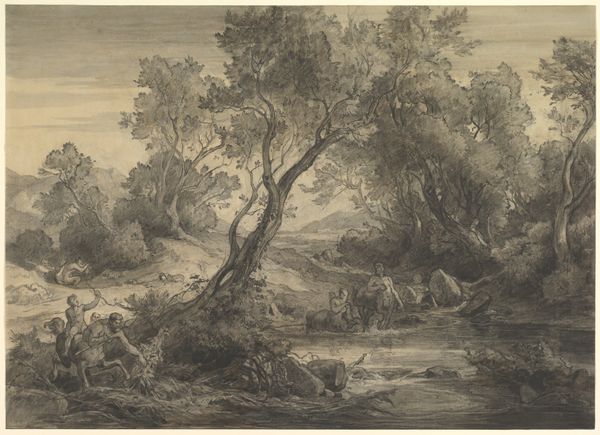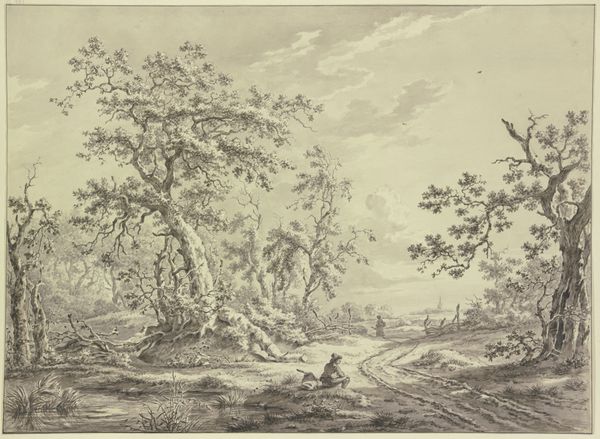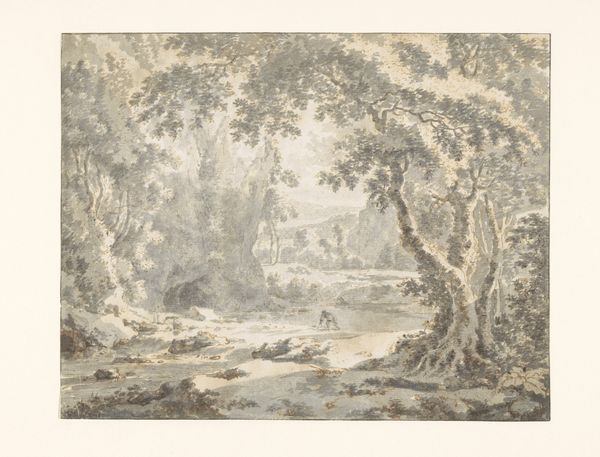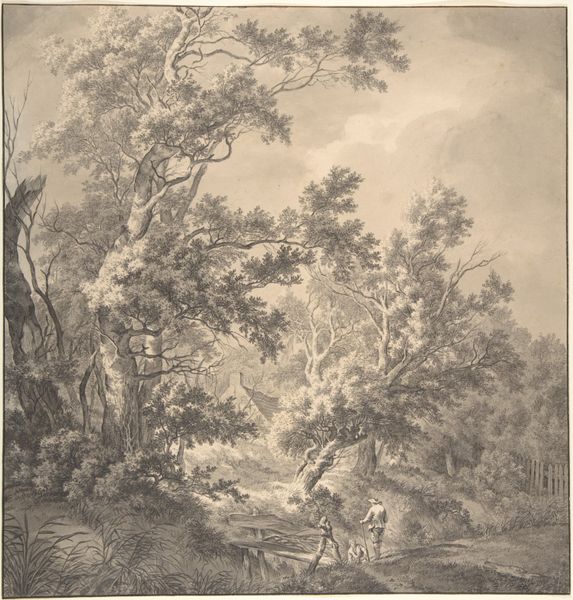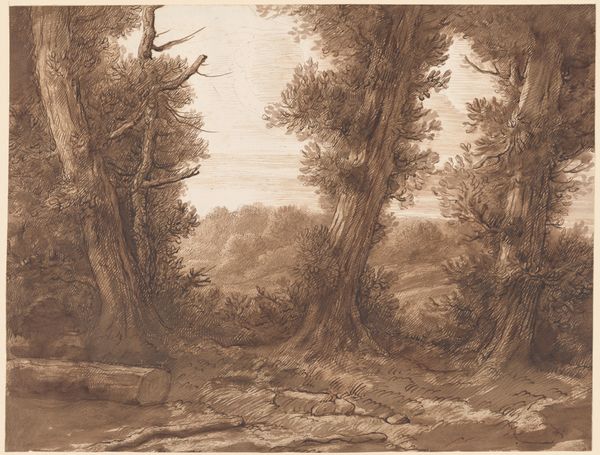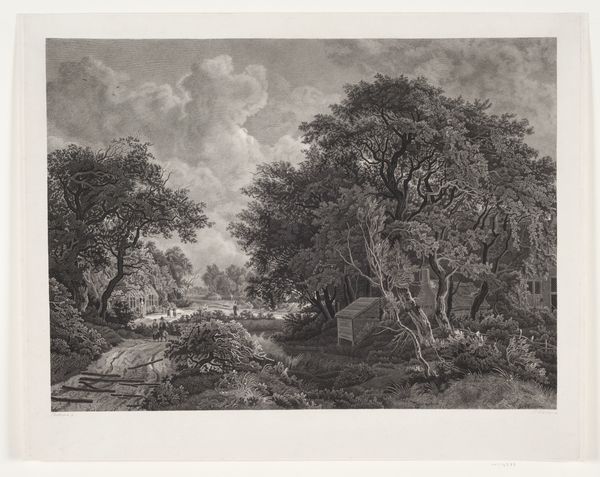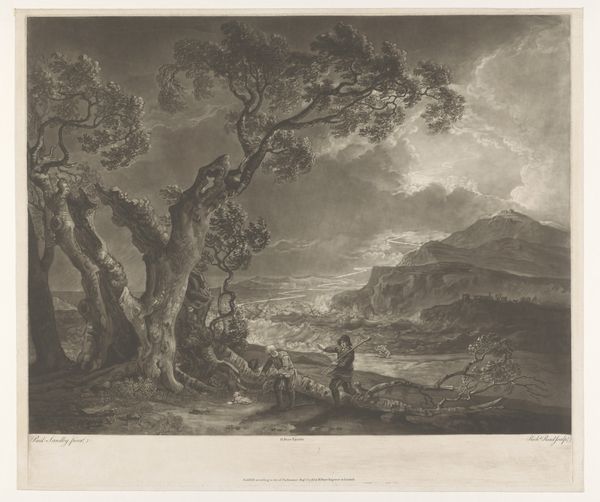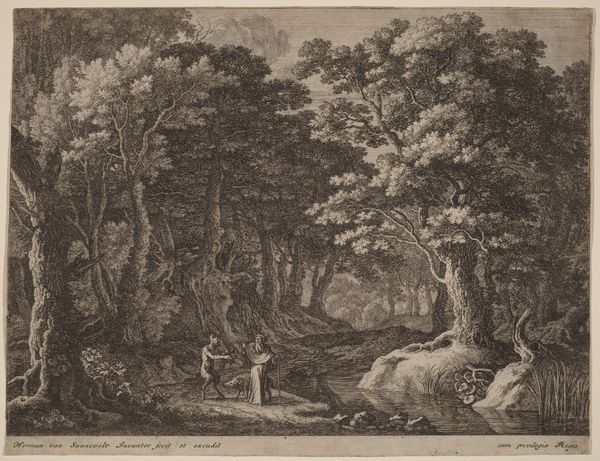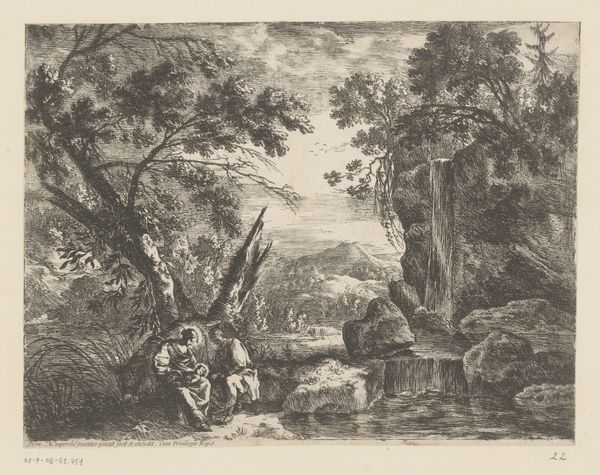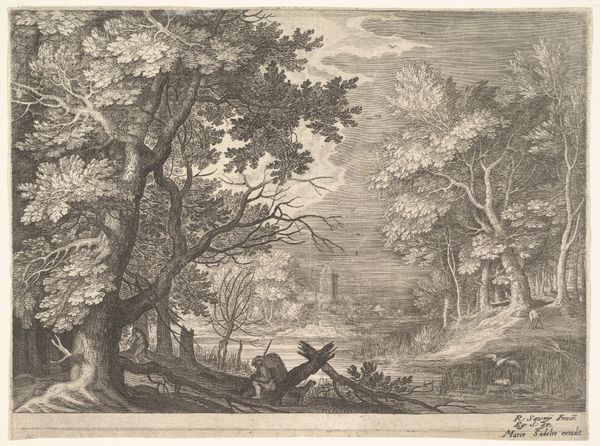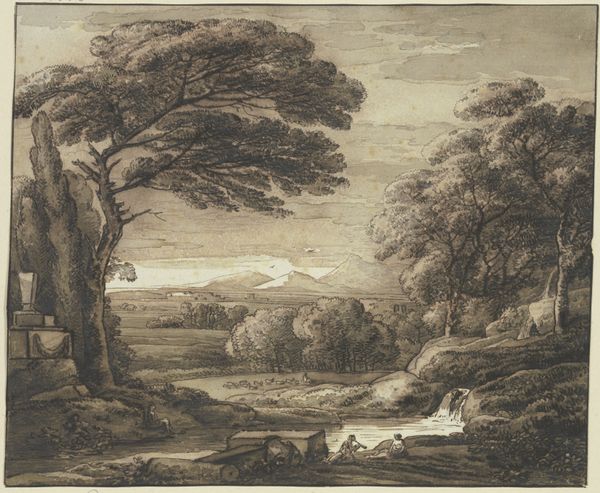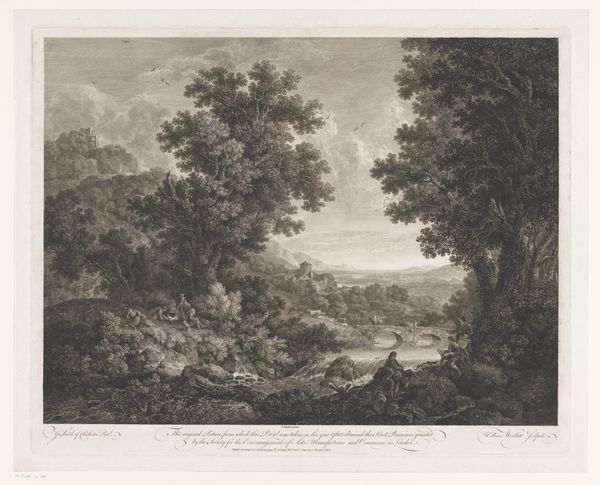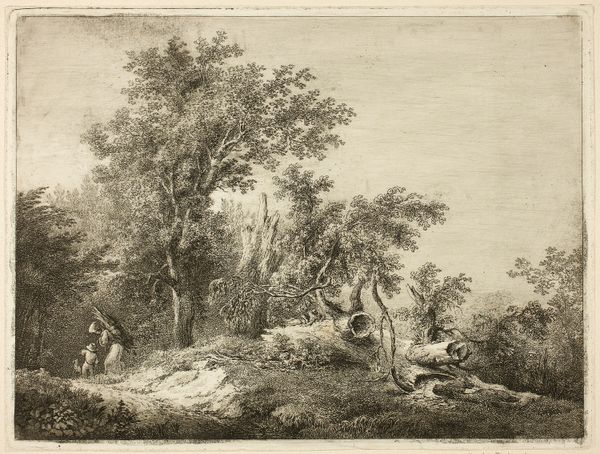
Dimensions: 23 3/4 x 31 3/4 in. (60.33 x 80.65 cm) (image)24 x 32 1/4 in. (60.96 x 81.92 cm) (sheet)
Copyright: Public Domain
Editor: This drawing, "The Storm," is by Jean Antoine Constantin, dating from around the 18th century. It's done with pencil, pen and ink. I find the light, particularly the sharp lightning strike, to be the most compelling element, considering how it changes the feeling of the whole scene. How might this scene speak to its audience, considering its time? Curator: That’s an excellent observation. In the 18th century, especially with the rise of Romanticism, storms were often used as metaphors for social and political upheaval. Do you notice the tiny figures in the boat, struggling against the elements? Think about the context: The French Revolution was brewing. Editor: So, this artwork could be seen as reflecting the turbulent times. But could it also just be an interest in depicting nature’s power? Curator: It's definitely both. The sublime was a popular concept. Artists were fascinated by nature's ability to inspire awe and fear, to showcase forces beyond human control. And in that era, such uncontrollable forces felt increasingly relevant in social discourse. Do you see how the *chiaroscuro*, the dramatic contrast of light and dark, enhances that feeling? It intensifies the scene’s dramatic impact. Editor: Yes, it’s much more dynamic because of that stark contrast. Were there specific institutions or artistic groups that would have supported or promoted this type of work? Curator: Absolutely. Academies were central. Artists sought patronage from wealthy individuals and exhibited at salons. These venues were critical in shaping public taste and legitimizing art like this, aligning it with contemporary intellectual and political debates. The way a storm is portrayed in a museum context inevitably changes how the public engages with its political messages. Editor: This has provided a really interesting viewpoint of this artwork as more than a scene! Curator: Indeed. By understanding the social and political context, we see that this image of nature’s fury may carry deeper meanings about the societal ‘storms’ of its time, broadening the impact of the work in today's political landscape.
Comments
No comments
Be the first to comment and join the conversation on the ultimate creative platform.
